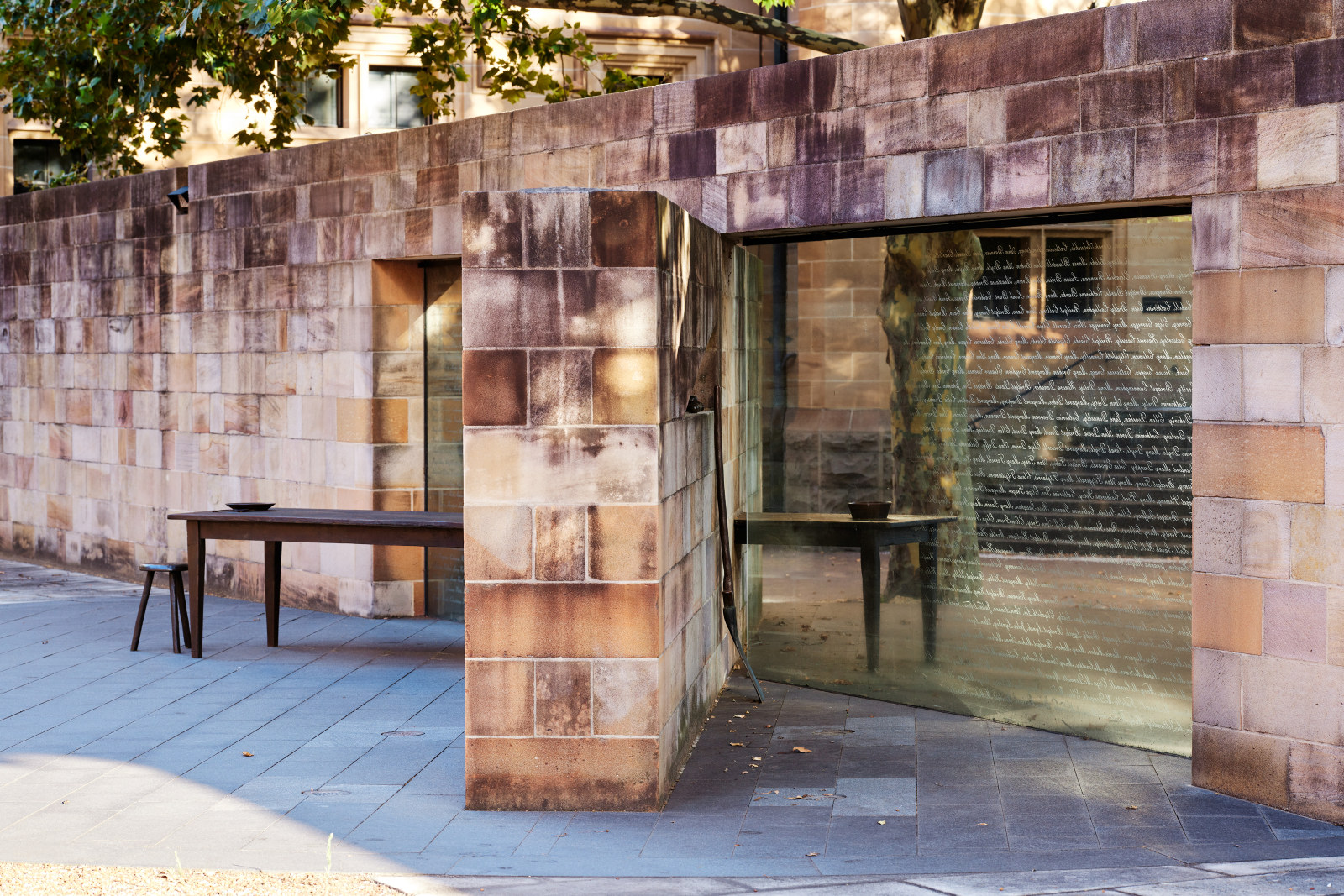Australian monument to the Great Irish Famine

The Australian Monument to the Great Irish Famine is located on the southern wall of the Hyde Park Barracks, on the site of the former convict-era kitchen and mess halls.
The monument was inspired by the 1995 call of Irish President Mary Robinson to remember the famine of 1845–52 and those who died or were forced to emigrate. The barracks is an apt location for the monument: 2253 of the 4114 Irish orphan girls who arrived in Australia between 1848 and 1850 were housed at the barracks during its term as Sydney’s female Immigration Depot.
Constructed in 1999, and designed by artists Hossein and Angela Valamanesh, the monument was funded by donations from the NSW Government, the Irish Government and the Australian Irish community. The 420 names etched into the glass panels represent the millions of people who died or were forced to emigrate. A loy (potato-digging spade) and a shelf holding potatoes allude to the repeated crop failure that caused the famine. A table cuts the wall, representing the famine experience on one side and the new world and a bountiful future on the other.
The significance of this monument resonates far beyond the experience of the orphan girls.
About one third of the convicts transported to NSW between 1788 and 1840 – many of whom passed through the Hyde Park Barracks – were Irish, and about 85 per cent of the immigrant women and children who stayed at the Immigration Depot in the 1850s and 1860s were famine survivors. Some of the first of these to arrive, in early 1848, were the wives and children of Irish convicts already living in the colony. Like much of the Irish population, these families were pushed to the brink of starvation by the famine.
The Great Irish Famine Commemoration Committee maintains a website and database of the Irish orphans who came to Australia between 1848 and 1850.
Hyde Park Barracks
Queens Square, Macquarie Street Sydney NSW 2000- Wheelchair accessible
Display
Explore our learning programs and make a booking